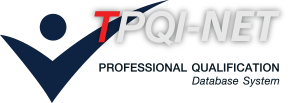หน่วยสมรรถนะ
Maintain basic light aircraft instrument systems and components.
สาขาวิชาชีพการบิน
รายละเอียดหน่วยสมรรถนะ
| 1. รหัสหน่วยสมรรถนะ | AVT-MVGV-256A |
| 2. ชื่อหน่วยสมรรถนะ | Maintain basic light aircraft instrument systems and components. |
| 3. ทบทวนครั้งที่ | / |
| 4. สร้างใหม่ |
|
ปรับปรุง |
|
| 5. สำหรับชื่ออาชีพและรหัสอาชีพ (Occupational Classification) | |
|
7232 Aircraft engine mechanics and fitters |
|
| 6. คำอธิบายหน่วยสมรรถนะ (Description of Unit of Competency) | |
| This unit of competency requires the application of manual skills and the use of the knowledge system / components and equipment applicable to inspect, test and troubleshoot basic systems of aircraft instruments and to remove and install the components during maintenance test scheduled or unscheduled. The work can be done individually or as part of a team. Applications include fixed-wing aircraft with light rotorcraft and fixed train basic landing skids or floats and no flight controls motor powered by a piston engine normally aspirated or gas turbine small. | |
| 7. สำหรับระดับคุณวุฒิ |
| 1 | 2 | 3 | 4 | 5 | 6 | 7 | 8 |
|---|---|---|---|---|---|---|---|
| 8. กลุ่มอาชีพ (Sector) | |
| 10 Aircraft Mechanics | |
| 9. ชื่ออาชีพและรหัสอาชีพอื่นที่หน่วยสมรรถนะนี้สามารถใช้ได้ (ถ้ามี) | |
| 103 Aircraft Maintenance: Avionic | |
| 10. ข้อกำหนดหรือกฎระเบียบที่เกี่ยวข้อง (Licensing or Regulation Related) (ถ้ามี) | |
| ICAO Doc 7192 / EASA Part 66 | |
| 11. สมรรถนะย่อยและเกณฑ์การปฏิบัติงาน (Elements and Performance Criteria) |
| หน่วยสมรรถนะย่อย (EOC) | เกณฑ์ในการปฏิบัติงาน (Performance Criteria) | รหัส PC (ตามเล่มมาตรฐาน) |
รหัส PC (จากระบบ) |
|---|---|---|---|
| 103307.01 Inspect, test/adjust basic aircraft instrument systems and components. |
103307.01.01 Instrument system components are visually or physically checked for external signs of defects in accordance with applicable maintenance manual. |
103307.01.01 | 199740 |
| 103307.01 Inspect, test/adjust basic aircraft instrument systems and components. |
103307.01.02 Instrument system is functionally tested in accordance with maintenance manual for evidence of serviceability or malfunction. |
103307.01.02 | 199741 |
| 103307.02 Troubleshoot, remove and install basic basic aircraft instrument systems and components. |
103307.02.01 Basic aircraft instruments causes of faults are clearly identified and recorded properly in the maintenance documentation, as necessary, in according to standard procedures for companies. |
103307.02.01 | 199749 |
| 103307.02 Troubleshoot, remove and install basic basic aircraft instrument systems and components. |
103307.02.02 The physical removal and installation of the components of the instrument was performed in accordance with the maintenance manual and applicable regulatory requirements, ensuring proper adjustment / adaptation is performed. |
103307.02.02 | 199750 |
| 12. ความรู้และทักษะก่อนหน้าที่จำเป็น (Pre-requisite Skill & Knowledge) | |
|
101403 Minor repair for aircraft electrical components or parts |
|
| 13. ทักษะและความรู้ที่ต้องการ (Required Skills and Knowledge) | |
|
(ก) ความต้องการด้านทักษะ See Appendix A (ข) ความต้องการด้านความรู้ See Appendix A |
|
| 14. หลักฐานที่ต้องการ (Evidence Guide) | |
|
(a) Performance Evidence It is essential that the system test procedures, cleaning requirements and security measures applicable to the system being maintained instruments are fully observed, understood and respected. Ability to interpret procedures and specifications (allowable limits) inspection and apply them in practice through a series of inspections, testing and troubleshooting applications (including the appropriate involvement of supervisors and other trades) is critical. Evidence of transferability of skills and knowledge related to the inspection, testing and troubleshooting is essential. This is to be demonstrated by the application in a wide range of aircraft systems and instruments basic components contained in the evaluation conditions. Instrument system maintenance requirements and troubleshooting procedures, including pitot/static system leak testing . (c) Assessment recommendation |
|
| 15. ขอบเขต (Range Statement) | |||||||
|
(a) Recommendation
(b) Description |
|||||||
| 16. หน่วยสมรรถนะร่วม (ถ้ามี) | |
| N/A | |
| 17. อุตสาหกรรมร่วม/กลุ่มอาชีพร่วม (ถ้ามี) | |
| N/A | |
| 18. รายละเอียดกระบวนการและวิธีการประเมิน (Assessment Description and Procedure) | |
|
The assessment are based on combination of paper exams, interviewing, and practical demonstrations depending on the assessors’ judgement.Competition should be assessed in the workplace or work environment simulated using tools and equipment specified in the maintenance documentation. It is also expected that the applicable general-purpose tools and test equipment found in most routine situations would be used where appropriate. |
|
